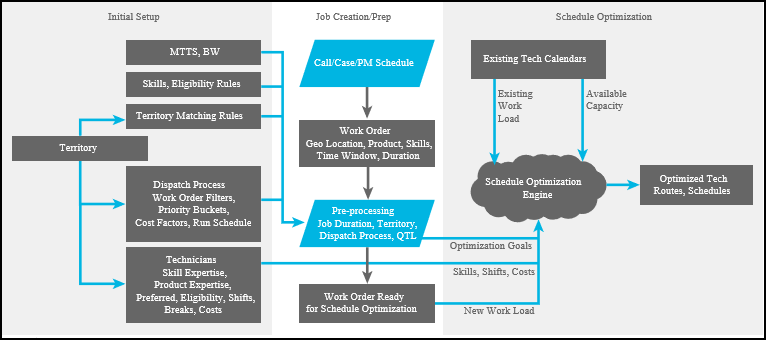High-Level Functional Flow
The following diagram illustrates the high-level functional flow of Schedule Optimization that demonstrates the various stages of the optimization process.

Actions During the Initial Setup Phase
• Territory matching rules assign a territory to work orders.
◦ Each technician is assigned to a territory.
◦ A dispatch process can affect one or more territories, but no single territory can have multiple dispatch processes.
• The dispatch process applies filters such as priorities, cost factors, and the run schedule.
• Technician availability is checked. Various factors related to technicians such as expertise, skills, business hours, resource preference (preferred/mandatory/excluded), and eligibility are considered.
• Other business rules (such as MTTS rules) are applied.
Actions During the Job Creation and Preparation Phase
• Work order trigger stamp requirements (such as geolocation, duration, and time window) are created.
• Pre-processing occurs at the time of the dispatch process run, where the work orders are stamped for the final time.
• Now the work order is ready for the final phase of optimization.
Actions During the Final Optimization Phase
• The work order, along with the technician and pre-processing information, is forwarded to the Schedule Optimization engine.
• The Schedule Optimization engine looks into the technicians' existing calendars to check the technician workload and available capacity.
• The Schedule Optimization engine gives the output, which is an optimized schedule.